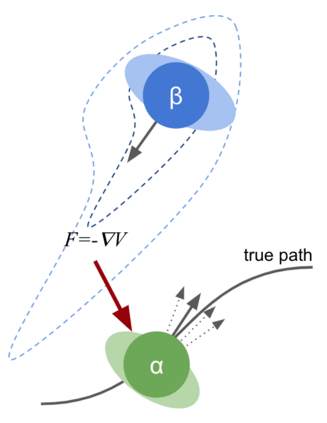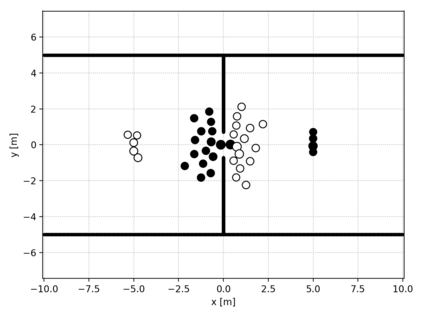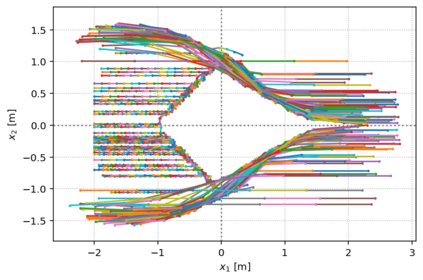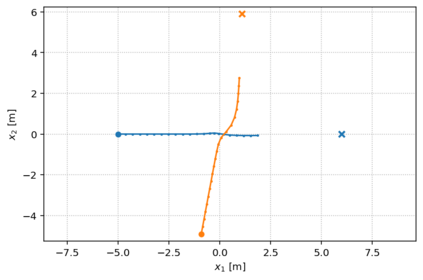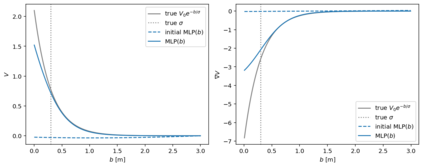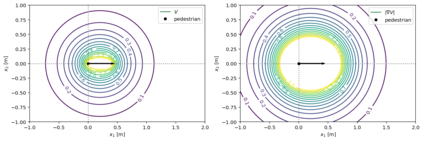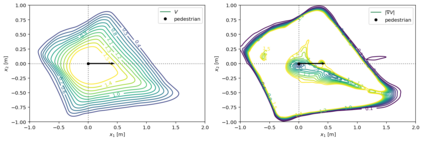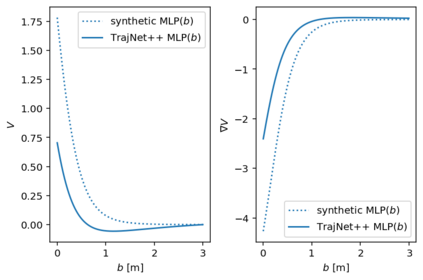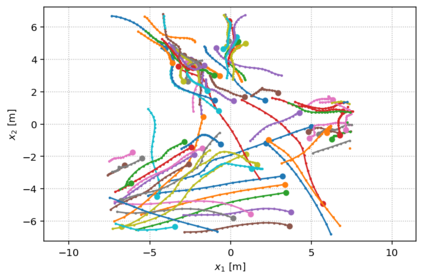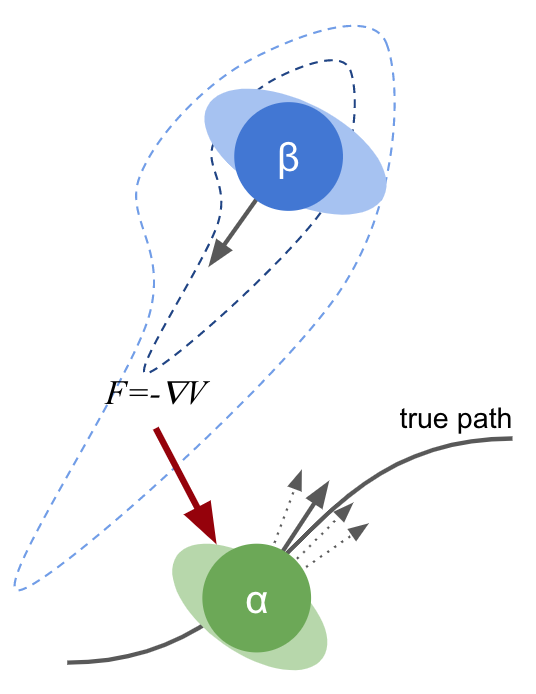The Social Force model introduced by Helbing and Molnar in 1995 is a cornerstone of pedestrian simulation. This paper introduces a differentiable simulation of the Social Force model where the assumptions on the shapes of interaction potentials are relaxed with the use of universal function approximators in the form of neural networks. Classical force-based pedestrian simulations suffer from unnatural locking behavior on head-on collision paths. In addition, they cannot model the bias of pedestrians to avoid each other on the right or left depending on the geographic region. My experiments with more general interaction potentials show that potentials with a sharp tip in the front avoid locking. In addition, asymmetric interaction potentials lead to a left or right bias when pedestrians avoid each other.
翻译:Helbing和Molnar于1995年推出的社会力量模型是行人模拟的基石。本文介绍了对社会力量模型的不同模拟,在这种模型中,通过使用神经网络形式的通用功能近似器,对互动潜力的形状的假设会放松,典型的以力为基础的行人模拟在正面碰撞路径上有不正常的锁定行为。此外,他们无法模拟行人在右侧或左侧的偏向,以视地理位置而避开对方。我的比较一般的互动潜力实验显示,在前侧有尖锐的尖头可以避免锁住。此外,在行人相互躲避时,不对称的互动潜力会导致左侧或右侧的偏向。

